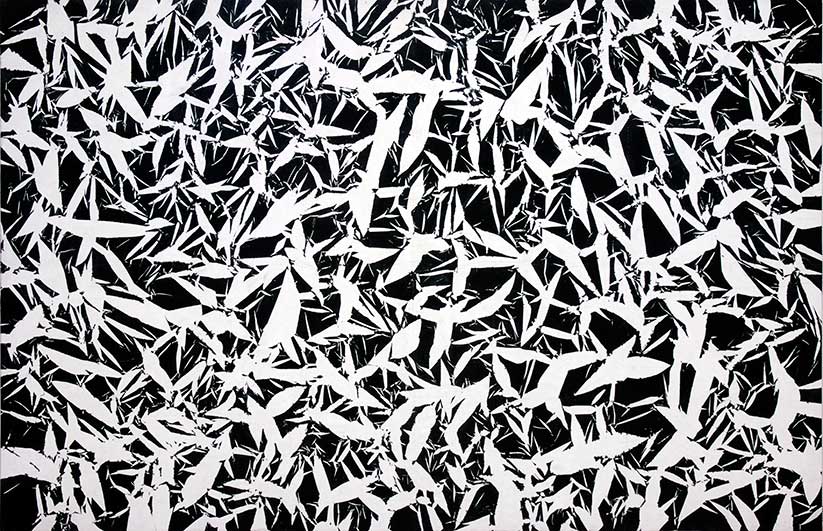Gagosian Le Bourget: Simon Hantaï
LES NOIRS DU BLANC, LES BLANCS DU NOIR
26 avenue de l'Europe, Le Bourget
EXTENDED THROUGH JUNE 27, 2020.
Gagosian is pleased to announce the representation of the Estate of Simon Hantaï (1922-2008). To inaugurate Hantaï's representation, LES NOIRS DU BLANC, LES BLANCS DU NOIR, an exhibition of black-and-white paintings and prints dating between 1969 and 1997, will be presented at Gagosian Le Bourget. Forteen photographs by Antonio Semeraro showing the cutting by Simon Hantaï of some of his monumental Tabulas.
Hantaï is best known for originating the technique of pliage (folding), in which a canvas is crumpled and knotted, uniformly painted over, and then spread out to reveal a matrix of abstract alternations between pigment and ground.
Born in Bia, Hungary, Hantaï studied at the Budapest School of Fine Arts from 1941 to 1946 before moving to Paris in 1948 to study and then, in the wake of the escalating Sovietization of his homeland, deciding to stay. In Paris, he joined André Breton's circle of Surrealists, completing several fantastical biomorphic paintings before encountering the work of Jackson Pollock and breaking with Surrealist ideologies in 1955. Pollock's action paintings directly inspired Hantaï's own turn toward monumentally scaled abstraction. Hantaï began creating pliage paintings in 1960, conceiving of the process as a marriage between Surrealist automatism and the allover gestures of Abstract Expressionism. The technique dominated the work he made during the rest of his career, reemerging in diverse forms.
Although many of Hantaï's works of pliage feature jewellike hues, he also created a number of these works featuring only black paint on bare canvas. LES NOIRS DU BLANC, LES BLANCS DU NOIR explores this subset of the artist's oeuvre: unmediated by color, the monochromatic paintings and prints celebrate the aesthetic form of the crease and document Hantaï's evolving relationship with the act of painting.
